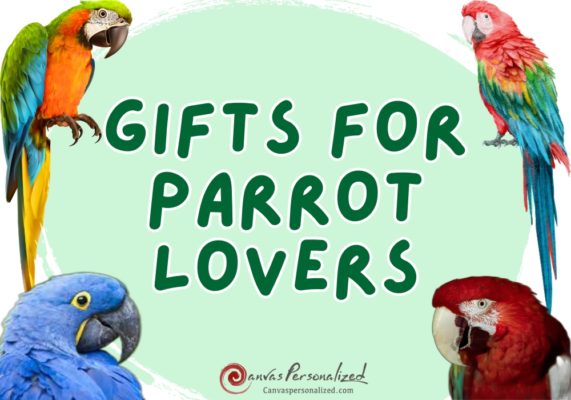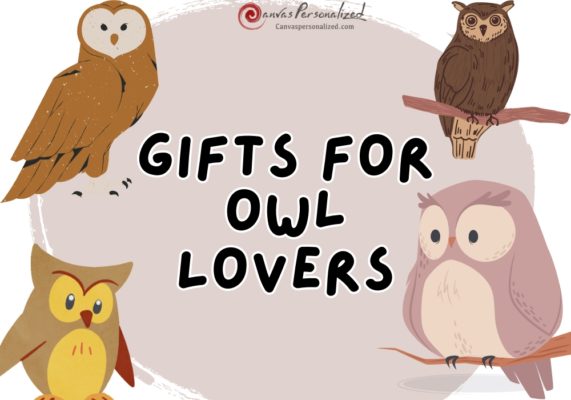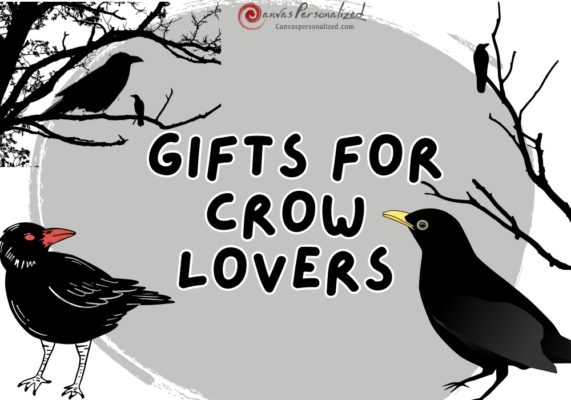Often called “velcro birds,” cockatoos adore human interaction. They belong to the parrot family, and numerous species are popular as household pets. They may be challenging to care for. But cockatoos are worth the effort because of their stunning appearance and kind personalities. They can blossom into loyal and loving friends with love and care. Canvas Personalized Blog has compiled a list of the top 12 types of cockatoo for pets.
12 Types Of Cockatoo To Keep As Best Pets In 2022
1. Black Palm Cockatoo
- Common names: Black palm cockatoo, palm cockatoo, goliath cockatoo, great black cockatoo, Van Oort’s palm cockatoo, black macaw
- Scientific name: Probosciger aterrimus
- Adult size: 22 and 24 inches, weighing between 2 and 3 pounds
- Lifespan: Between 40 and 60 years in the wild; up to 80 to 90 years in captivity with proper care
- Average price: Start at $15,000 and average to about $19,000.
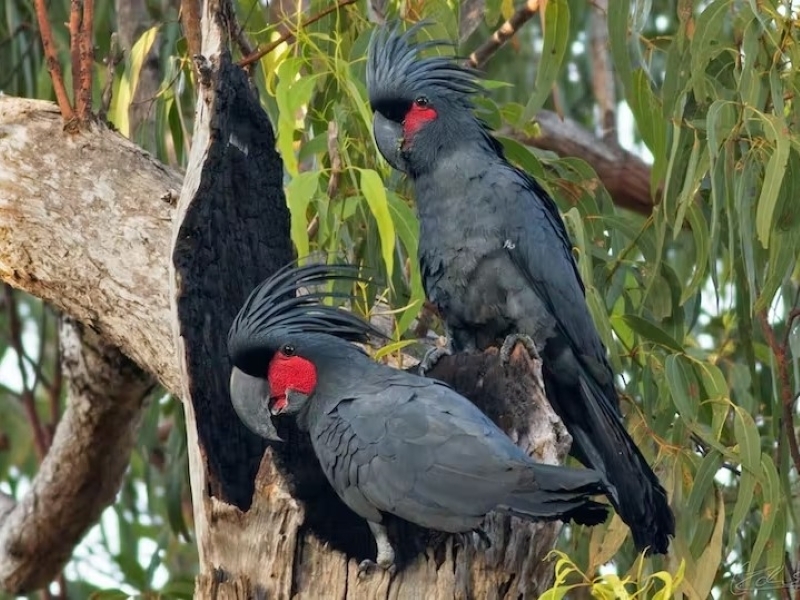
The black palm cockatoo is endemic to Australia, specifically the far northern tip of Queensland. Additionally, you can find populations of this cockatoo species in New Guinea and Indonesia today. These birds prefer the humid conditions of the forest, where they can find hollow trees to nest in.
Because of their size and strength, black palm cockatoos demand an experienced parrot keeper. Black palm cockatoos hand-fed by their owners can make wonderful companions, but they still need strict training. These huge parrots require owners who aren’t intimidated by their enormous beaks.
2. Citron-Crested Cockatoo
- Common names: Citron-crested cockatoo, citron cockatoo, Sumba cockatoo
- Scientific name: Cacatua sulphurea citrinocristata
- Adult size: 13 and 15 inches in length
- Lifespan: 50 years in captivity under ideal circumstances
- Average price: about $3,000 to $4,000
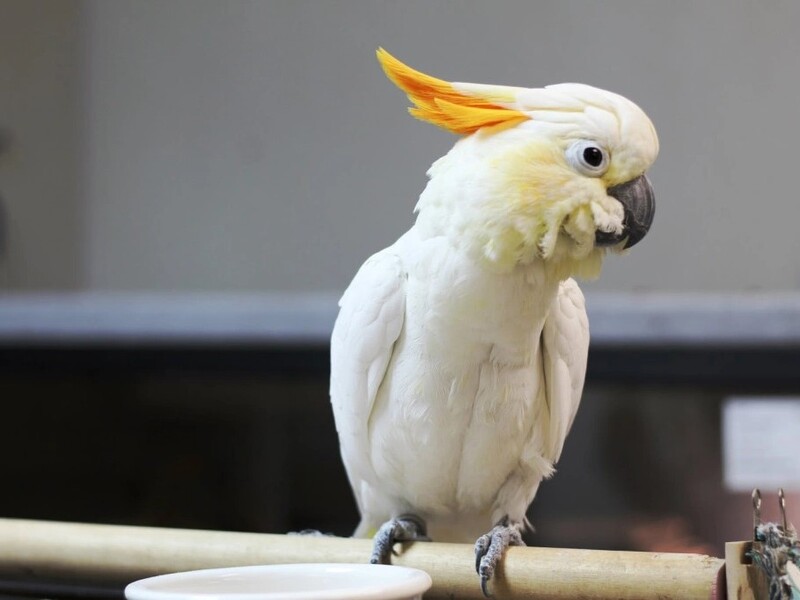
The Lesser Sunda Islands and the island of Sumba in Indonesia are home to the citron cockatoo. Also known as the Sumba cockatoo. It likes to live in tropical forests, especially near the edges of those forests.
As a result of widespread habitat loss and degradation, citron cockatoos are in a critical state of extinction throughout their entire range. Finding a reliable breeder is essential because this species is hard to obtain in pet stores. If you want to acquire a bird, ensure it has a CITES (Convention on International Trade in Endangered Species) certificate verifying it was bred in captivity and not taken from the wild.
Compared to other types of cockatoo, citron cockatoos tend to be relatively quiet. They may be small, but they have big personalities through how they engage with and delight their caregivers. A curious and friendly bird, a citron cockatoo will want to spend all day at your side. Plan on spending a minimum of three hours every day with this bird.
3. Moluccan Cockatoo
- Common names: Moluccan cockatoo, salmon-crested cockatoo
- Scientific name: Cacatua moluccensis
- Adult size: 20 inches
- Lifespan: Up to 70 years
- Average price: between $1,400 and $3,500

The Indonesian Maluku Islands are home to this species in their natural habitat. Some farmers see them as a nuisance. Loss of habitat and capture for the exotic pet trade have put Moluccan cockatoos in danger of extinction. Birds as pets should only come from captive breeding programs.
When properly cared for, Moluccan cockatoos develop deep emotional bonds with their owners. The prospective owner of a Moluccan cockatoo can anticipate a loving and occasionally clingy feathered companion. As these birds have a tendency to stick close to their preferred humans. That’s why they need someone to spend the day with at home.
4. Sulphur-Crested Cockatoo
- Common names: Sulphur-crested cockatoo, greater sulphur-crested cockatoo
- Scientific name: Cacatua galerita
- Adult size: The largest subspecies (C. g. galerita) can reach an adult size of about 20 inches, weighing nearly two pounds
- Lifespan: Up to 80 years in captivity with proper care
- Average price: $2,000 – $4,000

Native habitats of sulphur-crested cockatoos include eastern Australia, New Guinea, Indonesia, and New Zealand. Their popular location is the fringes of tropical and subtropical rainforests. Some areas of Australia have so many of these birds that they’re considered a pest. Since importing sulphur-crested cockatoos to the United States is illegal according to the Wild Bird Conservation Act, most pet birds are now raised in captivity.
Due to their intelligence, sulphur-crested cockatoos require a large play area. If these birds don’t get enough exercise and mental stimulation, they might resort to harmful habits like plucking and gnawing if they feel bored. The people caring for birds must give them lots of toys and spend several hours with them daily. If you want a smaller species, consider the triton cockatoo, a sub species of the Sulphur Crested Cockatoo.
5. Umbrella Cockatoo
- Common names: Umbrella cockatoo, white cockatoo, white-crested cockatoo
- Scientific name: Cacatua alba
- Adult size: 18 to 24 inches in length
- Lifespan: 70 or 80 years or more in captivity with proper care
- Average price: $1,000–$3,000
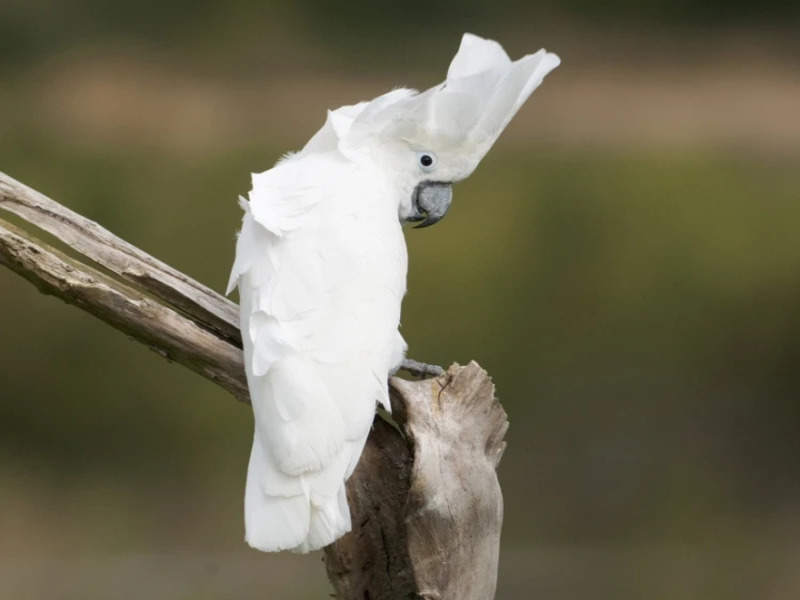
The Indonesian tropics are the natural habitat of the umbrella cockatoo. Due to factors including habitat degradation, hunting, and trapping, the umbrella cockatoos population is declining. Umbrella cockatoos are at risk of extinction and, therefore, a protected species.
Umbrella cockatoos, when fed by humans, can make excellent companion animals. Some become adept at imitating human speech and performing pranks. Even so, as highly social birds, they have the propensity to be overly affectionate and sometimes even obsessive when spending time with their loved ones. However, many are cherished family pets; even children can safely interact with them.
6. Goffini Cockatoo
- Common names: Goffin’s cockatoo, Tanimbar corella
- Scientific name: Cacatua goffini
- Adult size: Between 12 to 13 inches in length, making it one of the smallest cockatoo species, roughly the same size as a cockatiel.
- Lifespan: 70 or 80 years or more in captivity with proper care
- Average price: $1,000 – $2,000
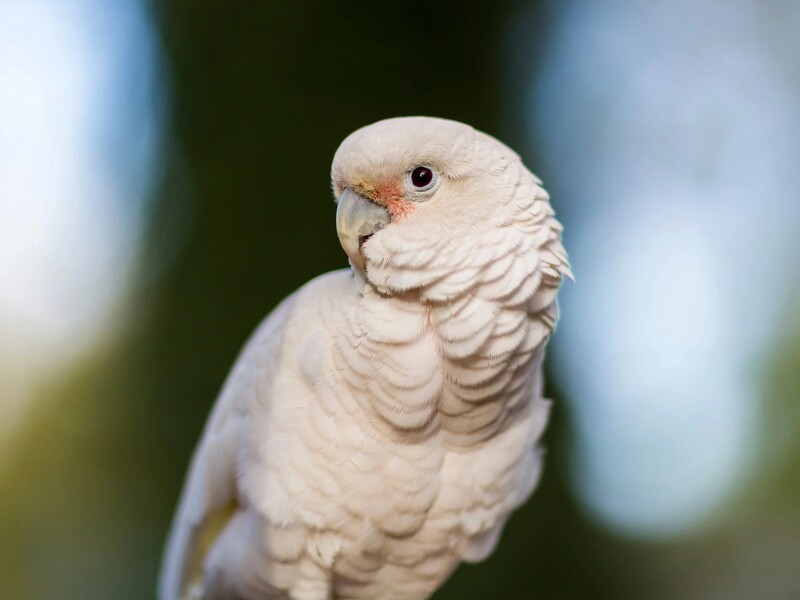
Goffin’s cockatoos are native to Indonesia’s Tanimbar Islands. The Lariat, Selaru, and Yamdena tropical woods in Maluku province are home to these beautiful birds.
Emotional well-being in Goffin’s cockatoos depends on frequent interaction with people. If their social demands aren’t addressed, these birds will fail to thrive and turn to harmful actions. These species of cockatoo are recommended for persons with previous experience with giant parrots due to their intelligence and a hint of mischief.
7. Bare-Eyed Cockatoo
- Common names: Bare-eyed cockatoo, little corella cockatoo, blue-eyed cockatoo
- Scientific name: Cacatua sanguineat; in the wild, four subspecies have been identified: C. s. sanguinea, C. s. normantoni, C. s. transfreta, and C. s. gymnopis
- Adult size: 14 and 16 inches
- Lifespan: 50 years
- Average price: $1,000 – $2,000
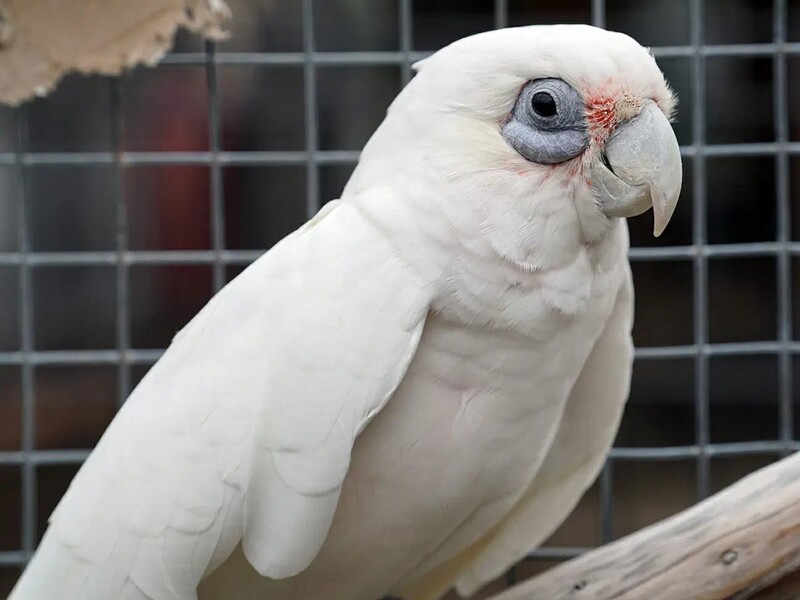
Only in Australia and southern New Guinea can you find this kind of white cockatoo. It’s not common for these blue eyed cockatoos to make their home in dense forests; instead, they prefer more open areas like deserts or coastal plains. Bare-eyed cockatoos can be found in both urban and rural locations. They are so common that they are a bother.
The bare-eyed cockatoo isn’t the most visually appealing parrot. But its unique and engaging personality more than makes up for its lack of aesthetic appeal. They are smaller species but just as friendly, playful, and smart. Because of this, they are a great choice for households with young children or those who just can’t support a huge parrot due to a lack of space.
8. Major Mitchell’s Cockatoo
- Common names: Major Mitchell’s cockatoo, Leadbeater’s cockatoo, pink cockatoo, desert cockatoo, wee juggler, cocklerina, chockalott
- Scientific name: Cavatua Lophocroa leadbeateri
- Adult size: 13 to 15 inches in length
- Lifespan: 40 to 60 years in the wild; up to 80 years in captivity
- Average price: $2000-2500 for an adult Galah cockatoo, and the cost of a tamed young cockatoo is $1200-1500.
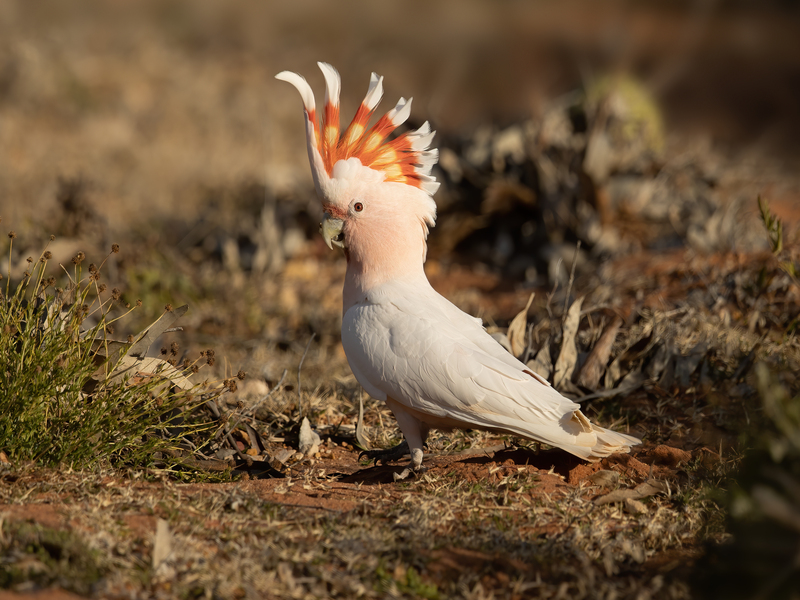
Major Mitchell’s cockatoos are only found in the interior of Australia. Sadly, humans’ destruction of natural habitat is causing Major Mitchell’s cockatoo population to decline.
The most defining feature is the crest of the beautiful and intelligent Major Mitchell’s cockatoo. Though beautiful, these cockatoos have specific needs and require spacious enclosures that not everyone can provide. Those who have experience with giant parrots may care for these birds successfully.
9. Yellow-tailed Black Cockatoo
- Common names: Yellow-tailed black cockatoo, funeral cockatoo, yellow-tailed cockatoo
- Scientific name: Calyptorhynchus funereus
- Adult size: 22–26 inches
- Lifespan: Up to 40 years
- Average price: $7,500 to $15,000
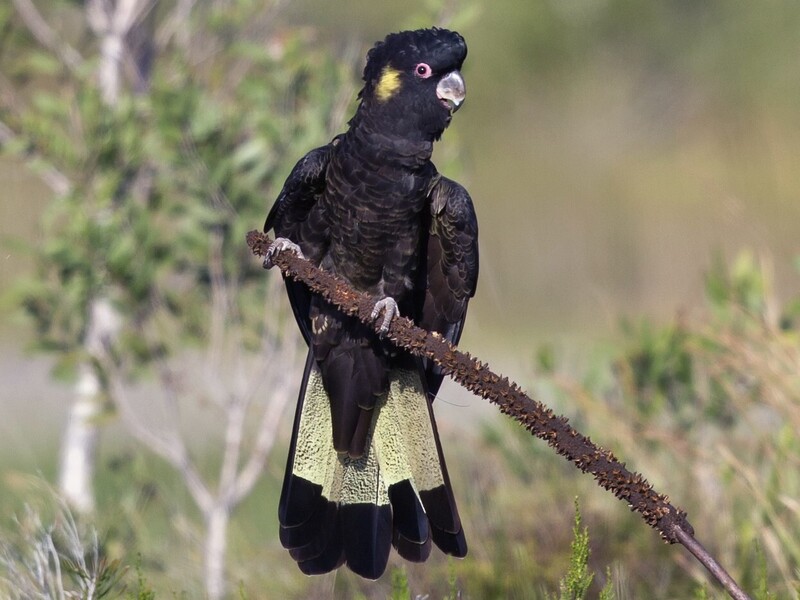
This species of cockatoo, known as the Yellow-tailed Black Cockatoo, is all-black with yellow check patches. They also have a large, golden band across the base of their tail. The same as woodpeckers, they consume by ripping out chunks of bark and devouring the insects underneath. Like those of other Cockatoos, their numbers are falling because of the degradation of their natural environment.
With their friendly personalities and unusual appearance, these parrots have no trouble capturing the heart of every new owner. Big, smart, and goofy, the Yellow Tailed Black Cockatoo is so much fun to hang out with. Even though they need a lot of space to be pleased, that doesn’t mean they can’t be good pets.
10. Gang-Gang Cockatoo
- Common names: Gang-Gang, Red-Headed Cockatoo, Red-Headed Parrot
- Scientific name: Callocephalon fimbriatum
- Adult size: 13–15 inches
- Lifespan: They live about 30 years on average
- Average price: $1800 – $2200
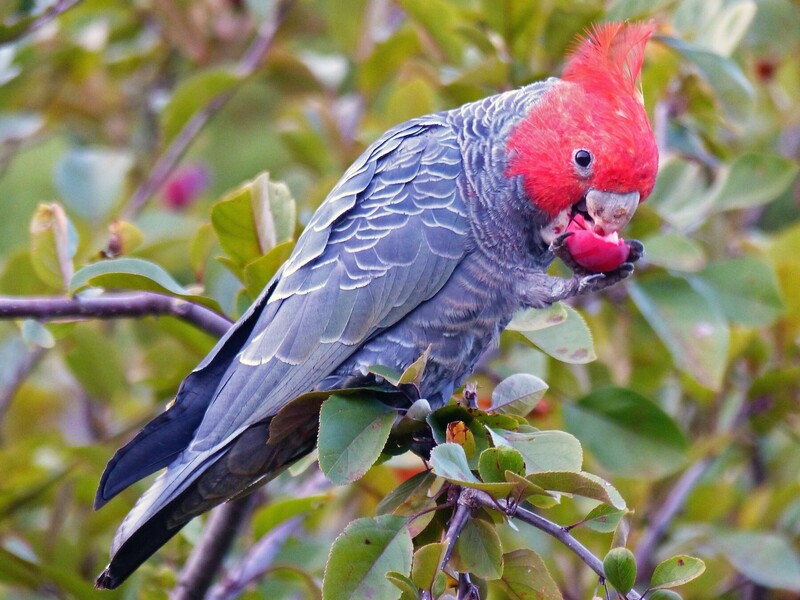
Southeastern Australia is the only place in the world where you can see the Gang-Gang Cockatoo, a species brought to Kangaroo Island. The Aboriginal language of New South Wales is the source of the unique name Gang-Gang. The bird gets its name from its lengthy, rasping call, like a rusty door hinge or a corkscrew being turned.
The red-headed cockatoo, often known as a gang-gang cockatoo, enjoys spending the warmer months of the year in the mountains of Southeast Australia. The males are easily distinguished by their brilliant red heads, while the female’s head is brown. Because of the Gang-uniqueness Gang’s and beauty, it has been chosen as the official symbol of the Australian Capital Territory (ACT). The Canberra Ornithologists Group and ACT Parks use it as part of their logos.
11. Glossy Black Cockatoo
- Common names: Glossy Black Cockatoo
- Scientific name: Calyptorhynchus lathami
- Adult size: 19.5 inches in length, weighing 14-17 ounces
- Lifespan: 15 to 30 years
- Average price: $1000 – $1500
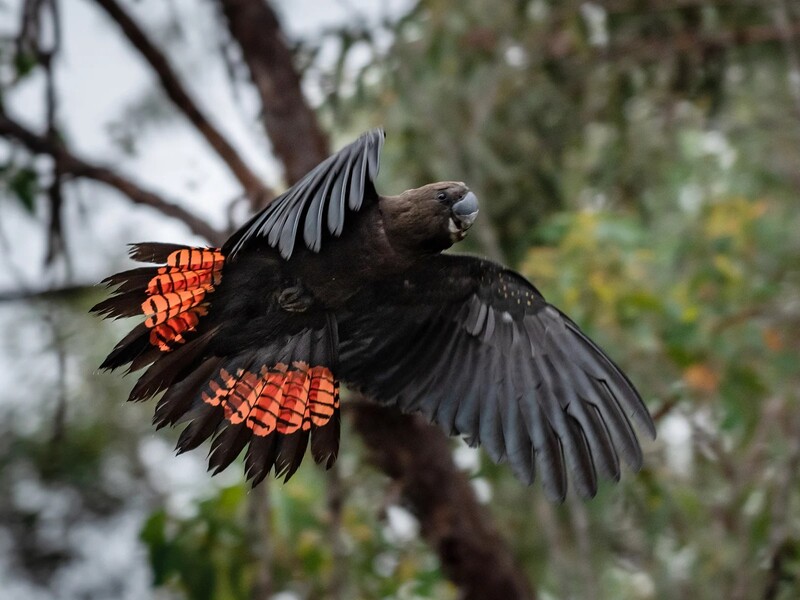
It’s hard to overstate the attractiveness of the glossy black cockatoo. Their primary feather color is, unsurprisingly, black. Yellow feathers may be seen atop the female’s head. Kangaroo Island in Australia is home to most of these types of cockatoo. Many of these birds have died because recent wildfires have burned down many of their homes. Regarding their personalities, glossy black cockatoos are very kind and loving.
The Glossy Black Cockatoo has an advantage over its cousins because it is friendly and playful. With their curious and playful antics, these smart parrots may make for great laughs. These exotic parrots may make wonderful pets if you give them the right environment.
12. Rose-Breasted Cockatoo
- Common names: Rose-breasted cockatoo, galah, galah cockatoo, pink and gray cockatoo, crimson-breasted cockatoo, roseate cockatoo, galah parrot
- Scientific name: Eolophus roseicapillus with three subspecies with slight color and size variations from different regions in Australia: Eolophus roseicapillus albicepts (southeastern), E. r. roseicapilla (western), and E. r. khuli (northern)
- Adult size: 12 to 15 inches in length, weighing 10 to 14 ounces
- Lifespan: Can live to 70 years in captivity; most commonly will live 40 or so years
- Average price: $700 to $3,000
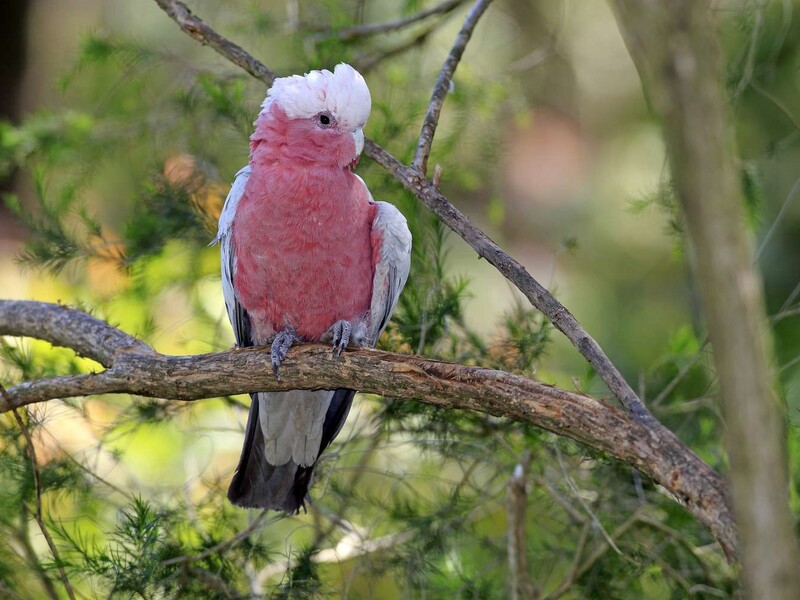
The galah is endemic to Australia and can be seen in grassy habitats. It arrived in Tasmania on its own, and it is now widespread over Tasmania. Galah cockatoos swarm together and frequently migrate with sulphur-crested cockatoos. They will get together with other species of cockatoo.
Rose-breasted cockatoos are common pets due to their attractive pink and gray plumage and pleasant demeanor. They are also called galahs and tend to be loud and bold. If you bring one home, don’t expect it to be a quiet pet.
How To Care A Cockatoo
Nutrition & Feeding
Seeds, grains, and insects found in trees are staples of a cockatoo’s diet in the wild. Yet, in captivity, feeding your bird a balanced diet that features fresh produce, veggies, and premium avian pellets is necessary.
Half of your pet bird’s diet should consist of pellets, while the other half should comprise fresh produce, grains, and legumes. Birds as pets might enjoy bird seeds and seed mixes as treats. Since these are high in fat, you should only give them to your bird sometimes. Nuts are the same way.
Lesser adults and younger ones Cockatoos may be picky eaters and will make good use of their food. Thus, make sure they’re eating healthy meals. If your birds already consume a designed food, they don’t need any more vitamins.
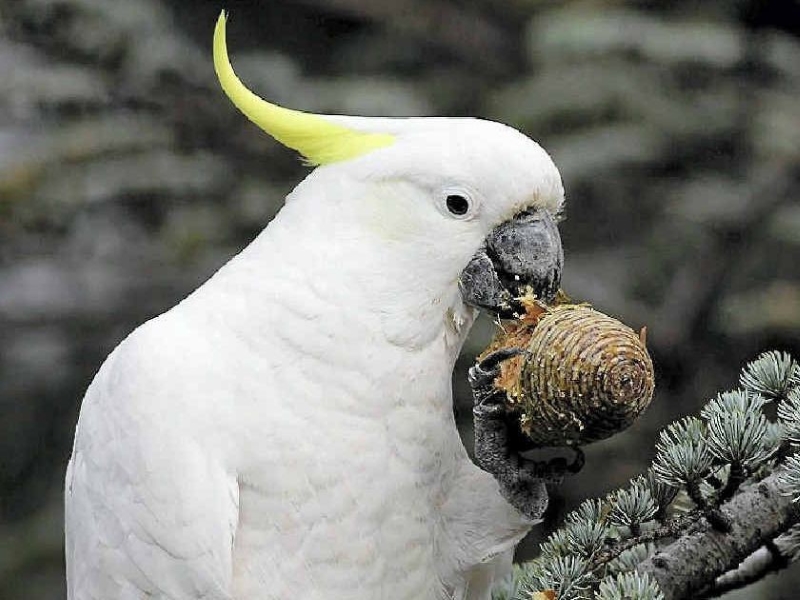
To keep from getting fat, it’s best to keep track of how much food you feed your bird. If you overfeed your pet, it may become overweight, finicky, waste food, and even throw up. The dietary requirements of variously sized birds vary. If your bird stays at a healthy weight, the feeding plan is right.
Common Heath Issues
This type of bird, in general, is resilient and may survive for a very long time. These cockatoos are quite delicate and easily upset. If the cockatoo thinks that the person it is bonded with is ignoring it, it will likely get depressed. As a result, it may resort to self-mutilation, such as plucking its feathers, which can lead to a skin infection.
This bird will die if it gets Sarcocystis, a parasitic muscle tumor. Psittacine beak and feather disease, bacterial infections, fungal infections, and metal poisoning are some avian illnesses that can affect cockatoos.
Grooming
Grooming is essential for these birds because they make dust when they move their special powder-down feathers. Those with allergies to animals may be adversely affected by this tiny dust, which can spread quickly throughout a home. Bathing your bird once a week can help control the spread of dust.
The skin and feathers of a bird can be controlled in reasonable condition by regular bathing or showering. Following a bath, hang them to dry, set them in the sun, or use a hair dryer. This will guarantee that your bird never gets dirty.
You should also cut the nails and wings of your birds when needed. Care should be taken with the branches to ensure the feathers aren’t cut off too much. Primary flying feathers should be prioritized while trimming to help the bird move more easily across the ground. Cockatoos that have lost a significant portion of their wings are more likely to experience injuries due to accidental falls.
Exercises
These avians require some open room for flight and exercise. Cages should be large enough for the bird to fly around and include perches and ladders for play. Letting the bird out of its cage at least once daily is also a good idea. This activity must be supervised to prevent them from escaping the house, getting hurt, or coming into contact with anything unsafe.
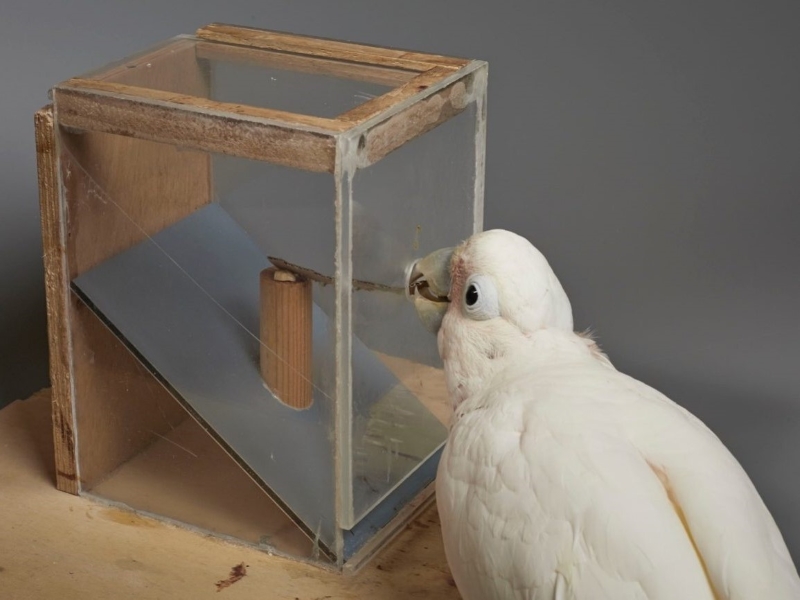
Three to four hours of cage-free time is appropriate for the bird every day. You should lock the windows during this time.
Tree branches, softwood toys, vegetable-tanned leather, rope toys, cardboard, and paper towel tubes are all great options for toys to keep in your Cockatoo’s cage so it can exercise its natural urge to chew. If you decide to install hanging toys, take precautions to prevent any potential strangulation incidents.
How To Get A Cockatoo As Your Pet
In the United States, cockatoos are widely available for adoption, purchase, or rescue through reputable groups. Generally, prices range from $500 to $4,000, varying widely across different species. Rare birds, like the black palm cockatoo, will set you back upwards of $25,000 from breeders.
If you go through a breeder, ensure they are trustworthy by asking how long they’ve worked with the species you’re interested in. Ensure the breeder is reliable, the cages are clean, and the birds are fed various foods by visiting the facility.
| Name | Location | Website | Number |
| The Aviary at Cauley Square | Miami, Florida | theaviaryatcauleysquare.com | (305) 258-2473 |
| Emerald Feather | Oceanside, California | emeraldfeather.com | (760) 439-8606 |
| Birds of a Feather Aviary | Sacramento, California | bofaviary.com | (916) 515-0309 |
| The Parrot University | Pineville, North Carolina | parrotu.com | (704) 889-2325 |
>> You might be interested in the following articles::
All cockatoo species and subspecies are cute and different. Some species are big, while others are small, but all types of cockatoos make good pets if cared for and loved. They are rare birds, so you’ll need finances and the right paperwork to raise one. We hope that the information in Canvas Personalized Blog can help you. You can look at our other articles to help you decide which pet bird is best for you.








